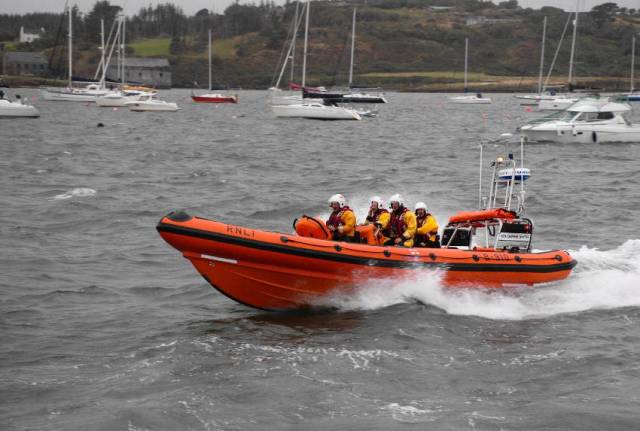Baltimore RNLI’s new Atlantic 85 lifeboat will be officially named Rita Daphne Smyth during a ceremony at the North Pier at 3pm this Sunday 8 September.
As part of the station’s centenary celebrations, the lifeboat, which was placed on service earlier this year, will be officially named exactly 100 years on from the day the first lifeboat, The Shamrock, arrived in the West Cork coastal village.
The RNLI says the new lifeboat has been funded by a generous legacy from the late Rita Daphne Smyth and replaces the station’s Atlantic 75 class lifeboat Alice and Charles.
The Atlantic 85 is the latest version of the B class, introduced into the fleet in 2005 — powered by two 115HP engines and with a stronger hull and greater top speed.
The self-righting vessel comes with radar and a full suite of communication and and navigation aids, as well as a searchlight, night-vision equipment and flares for night-time operations.
Tom Bushe, Baltimore’s lifeboat operations manager said that to receive and name a new lifeboat during the station’s centenary celebrations was something special.
“Our volunteers and the Baltimore community are delighted and excited to name our new inshore lifeboat exactly 100 years on from the day the very first lifeboat arrived at our station. We are most grateful to the late Rita Daphne Smyth for her generous legacy which has funded our lifeboat.
“Volunteers from the local community have been crewing a lifesaving service here for 100 years and we will be proud custodians of this new lifeboat, which will go on to rescue and save many more lives in the years ahead.”
When Baltimore saw The Shamrock begin service in 1919, it was the fourth lifeboat station in Co Cork. Since then, Baltimore RNLI’s lifeboats have launched more that 940 times and their crews have rescued 867 people including 280 lives saved.
The Shamrock remained in service until 1950 when a new Watson class lifeboat, Sarah Tilson, was placed on service. In 1978, the Sarah Tilson was replaced by another Watson class lifeboat called The Robert, which was replaced six years later was replaced by an Oakley class lifeboat called Charles Henry. In February 1988, a new Tyne class lifeboat, Hilda Jarett, was placed on service.
In April 2008, a second lifeboat, an inshore Atlantic 75 called Bessie, joined the station to complement the existing all-weather lifeboat. In February 2012 a new Tamar class lifeboat, Alan Massey, replaced the Hilda Jarrett.
In July the following year a complete refurbishment of the lifeboat house was finished, leaving the station with state-of-the-art facilities.































































